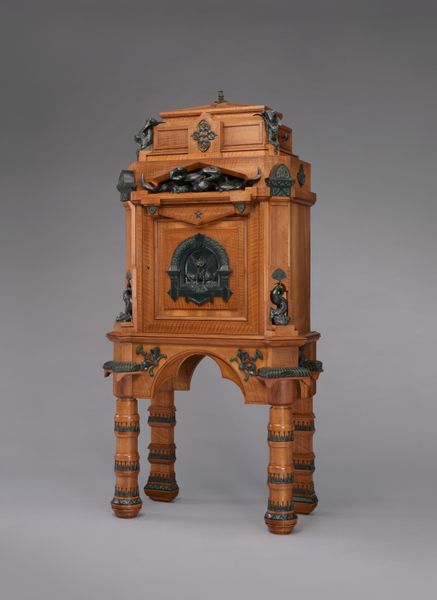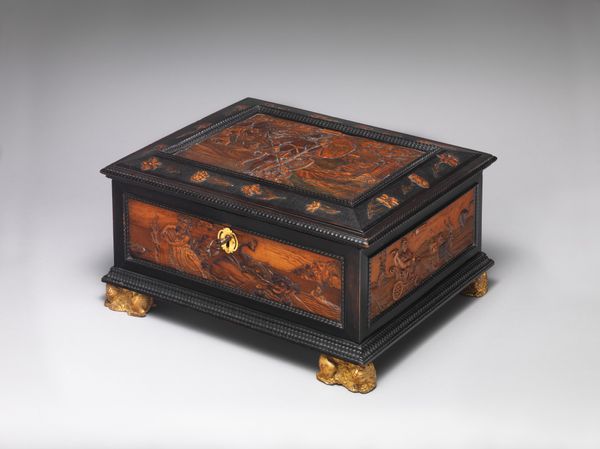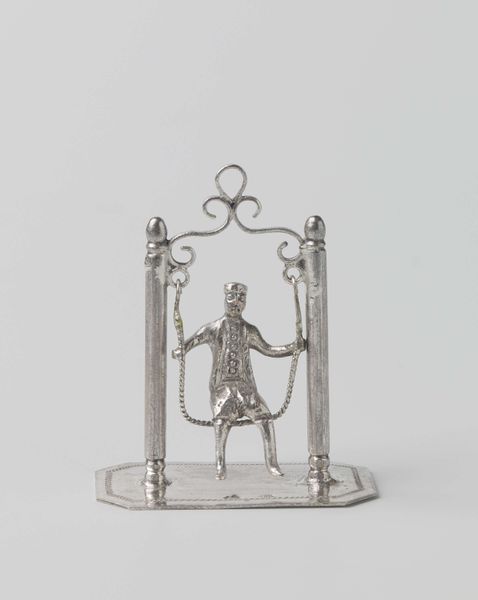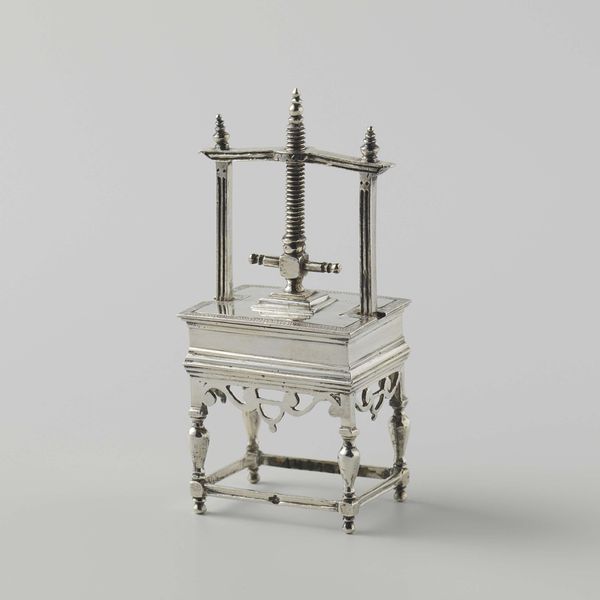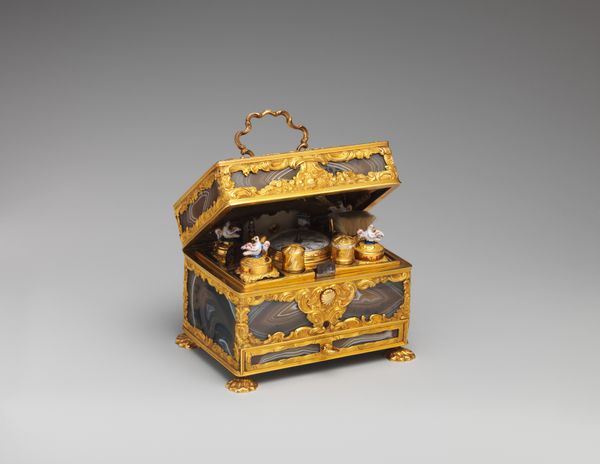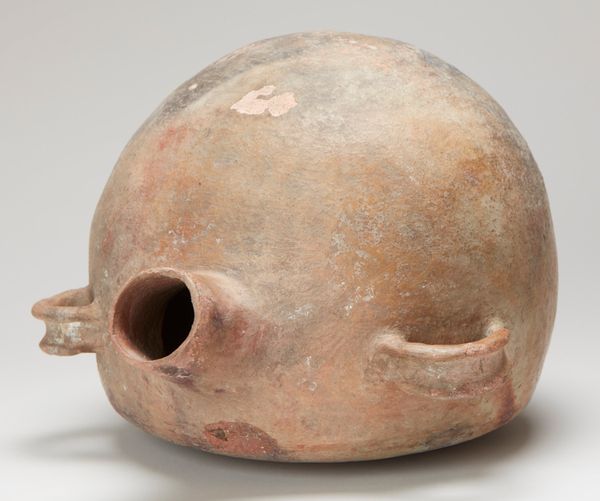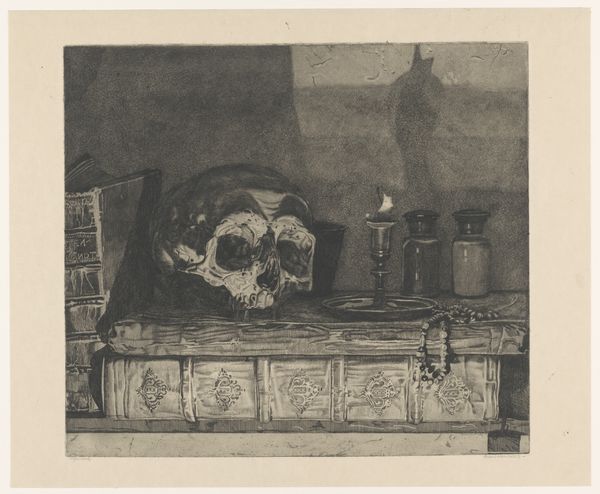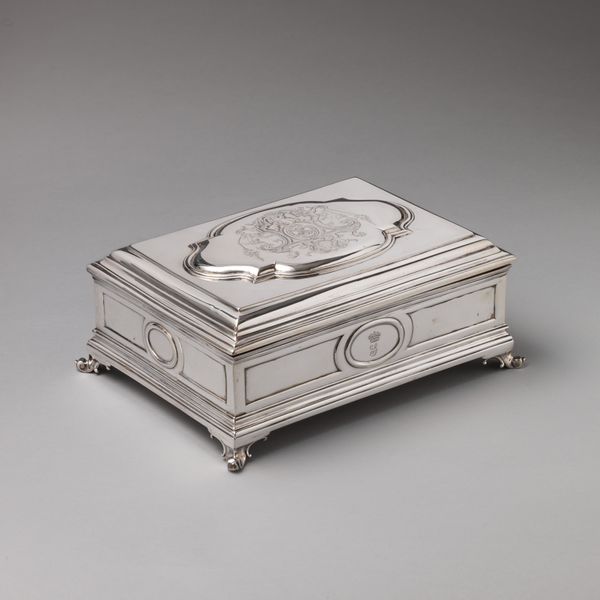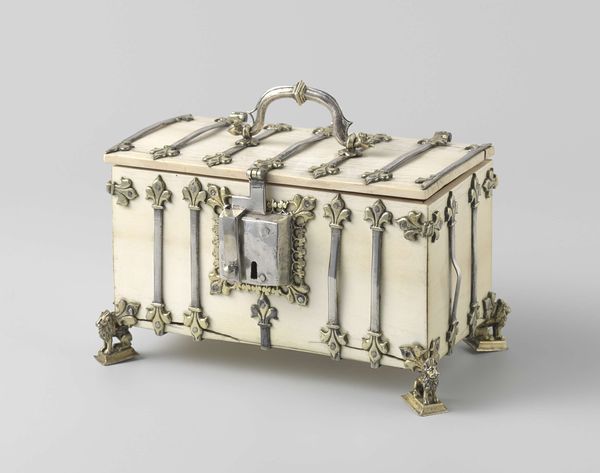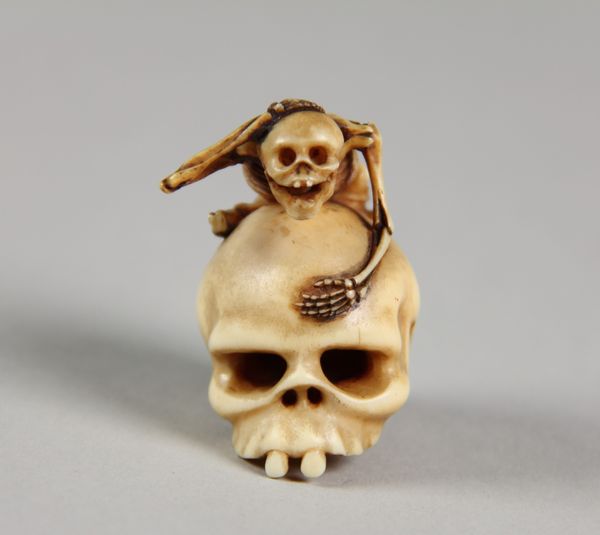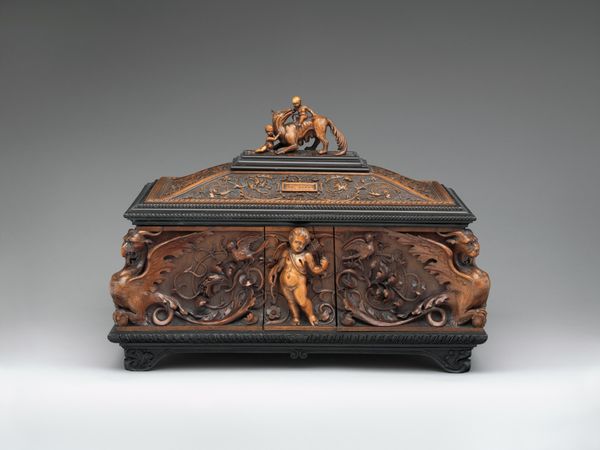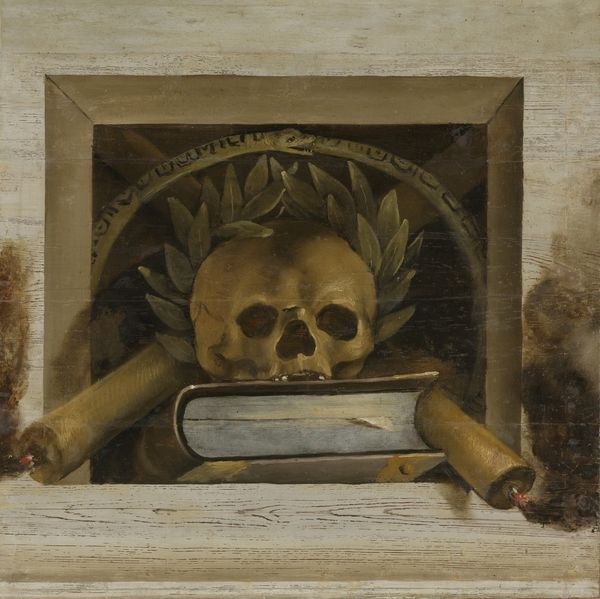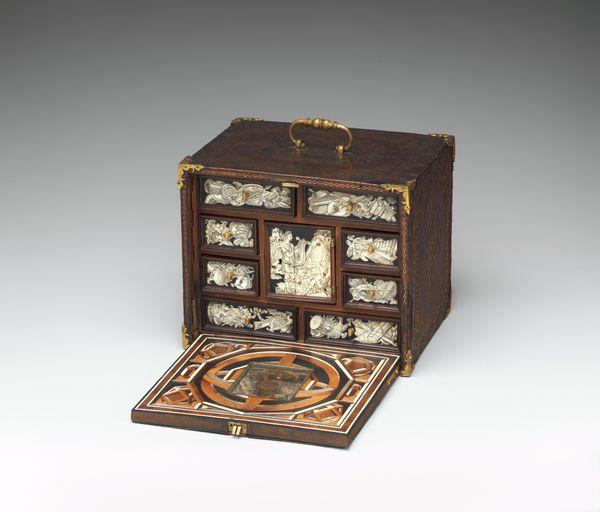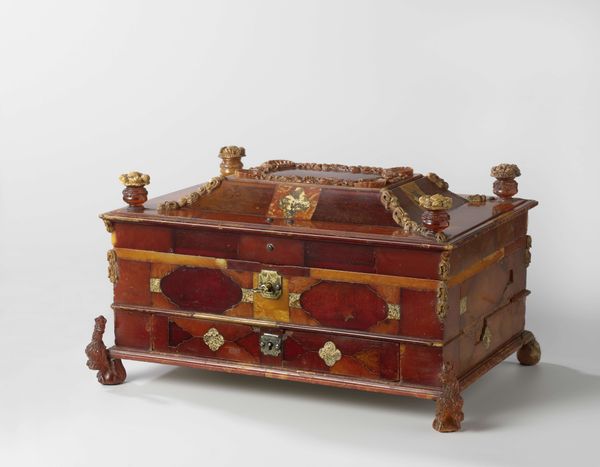
ceramic, porcelain, sculpture
baroque
ceramic
porcelain
vanitas
sculpture
decorative-art
Dimensions: Confirmed, as mounted assembled on base: 4 5/16 × 5 1/16 × 3 3/8 in. (11 × 12.9 × 8.6 cm)
Copyright: Public Domain
Curator: Let's turn our attention to this intriguing piece: a sculpture entitled "Skull and Crossbones," crafted between 1750 and 1765 by the Nymphenburg Porcelain Manufactory. Editor: What immediately strikes me is the disjunction. There's this dark, almost gothic mood juxtaposed with delicate porcelain, a material associated more with preciousness than mortality. Curator: Precisely. The sculpture’s power arises from that tension. Consider the skull, rendered with anatomical precision in pristine porcelain, resting atop the dark, roughly hewn wooden box. The box has mirrored panels too. Editor: Yes, and that placement—the skull, an object loaded with symbolism of death, poised on what seems to be a pedestal or even a container – really contextualizes death here. The mirror too evokes ideas about the "gaze of death," so often seen through an inequitable lens. The wealthy always controlled not only the material resources around death, like funeral arrangements, but also the narratives around it too. Curator: This is an excellent point. It draws in complex interpretations beyond the symbolic object as seen separately from class disparities and questions how death is defined within our world. Editor: Baroque decorative art often incorporated “vanitas” elements like skulls to remind viewers of life’s fleeting nature, to urge spiritual consideration above earthly concerns. Given the elite status associated with porcelain at the time, what statement was this luxury manufacture making when playing around with egalitarian symbols, knowing we will all die? How are symbols leveraged here? It suggests how these reminders are not made with all lives in mind. Curator: We see within its design elements—its textures and forms working dialectically with a symbolic charge within 18th century Europe—that "memento mori" as we consider what death tells us. Editor: Seeing how it plays into these issues offers further understanding into how to look at similar vanitas forms that center the material, symbolic and economic. Curator: Absolutely, engaging with this approach provides more nuanced encounters with such an object of study.
Comments
No comments
Be the first to comment and join the conversation on the ultimate creative platform.
